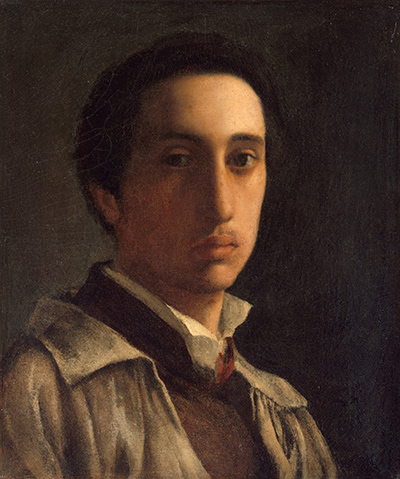Drawings
For many centuries the skills of draughtsmen were ignored in favour of their paintings, but slowly this medium achieved the respect that is clearly deserved. Edgar Degas drawings are considered amongst the finest contributions to this medium across the entire 19th century.
Such was this artist’s achievements as a draughtsman, both in terms of quality and quantity, that we have separated his work here from Degas’ pastel drawings. Degas can be described as someone who enjoyed drawing passionately, it was never merely a method of just preparing for oil paintings. As with any great draughtsman, this artist would address the same themes time and time again in order to perfect his drawing skills.
He understood that the only route to perfection was practice, even though he possessed such natural talent. The examples laid down by Michelangelo and Da Vinci in this regard were something that he could learn from. When one studies art history, particularly around the various stages of the Renaissance, you will see that painters have been also judged on their drawing skills to varying levels of importance. For example, in the Papal States of Italy, an artist could not be considered a fine painter if he could not draw to the same level.
In comparison, Spanish Renaissance artists could impress in painting without any requirement to display skills in other mediums, although Diego Velazquez differed in that regard. Degas understood this and desired to improve his skills in sketching at an early stage in his career before finding himself truly passionate about this art form and started to view it as an art form in its own right that could be presented as such, rather than being viewed as merely part of a process towards completed oil paintings.
The content used in Degas’ drawings was similar to his work in other mediums but differed in terms of frequency. The list below of his most famous drawings will give a quick overview of his work in drawing, taking in the likes of dancers, landscapes, racehorse scenes and also other related portraits. This was a truly prolific artist who left behind a huge collection of work across many mediums. Edgar Degas never stopped testing himself and was very quick to receive the academic praise that his career deserved.
Degas was not the only impressive French draughtsman from the 19th century. Monet drawings are amongst the most prized artworks in this medium from right across the full history of European history and this respected art movement also featured several other highly talented names. This entire art movement, of which Degas was not happy to be linked to, breathed creativity into the art world as well as considerable technical ability. Despite their belief in modern ideals, drawing was still considered the basis of any artist’s career.
Another interesting aspect of studying Degas’s drawings independently from the rest of his career oeuvre is that it covers his entire span as an artist, allowing us to appreciate his development across the decades. There have been many artists who learnt their trade as a draughtsman and then disregarded this art movement once their skills as painters or sculptors was established – this was never the case with Degas. The best summary of this artist’s drawings would be that despite his failing eyesight in his later years, Edgar Degas will always be considered as one of the most gifted sketchers of the human body.

